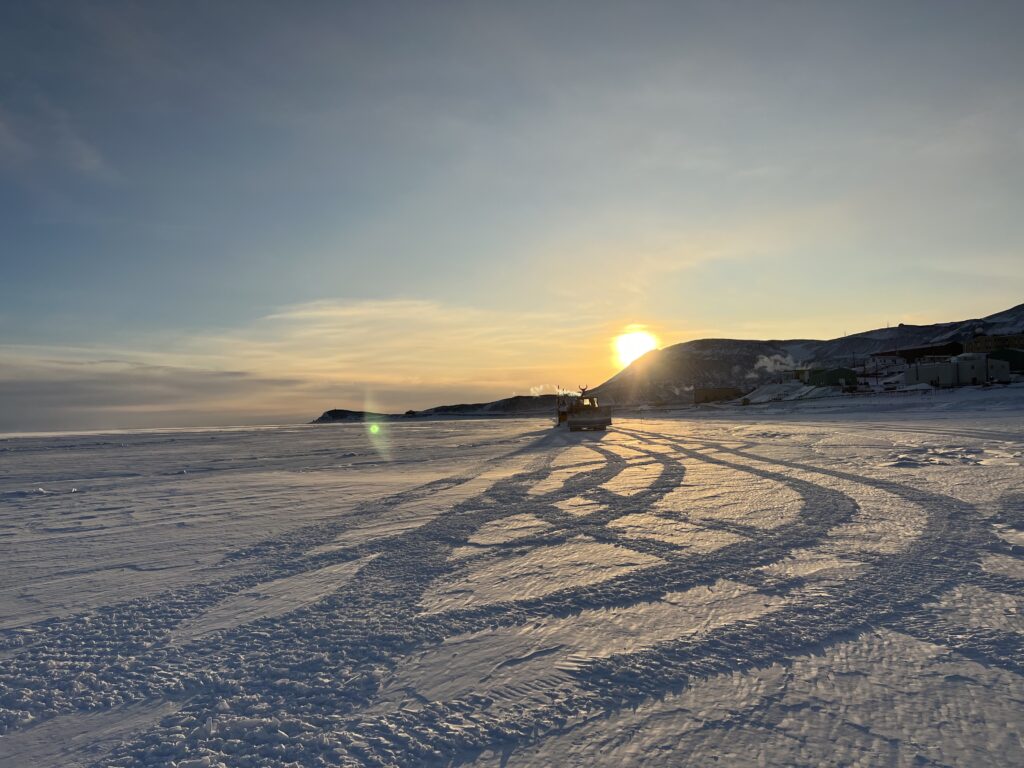On September 6th, we met the Fleet Operations (“Fleet Ops”) team on the sea ice to start drilling our dive hole!
The first place where we dive is known as “The Jetty” and is located ~100m from the shores of McMurdo Station.

The overall process of getting the dive hole drilled took approximately 4 hours. The first step was to tow the drill and dive hut out onto the ice.

The dozer dragged the drill to the exact place where we wanted the hole. The next step was to attach the screw bit to the TEREX drill. The drill bit is so heavy that it could not be attached prior to towing the drill.

Then it was time to start drilling. Check out this video we took of the drilling process:
Once the hole was drilled, we had to scoop out some of the platelet ice that had been knocked down into the hole. Turned out, that scooping slushy ice out from an ice hole using nets was a quick way to get warm on this day which was particularly chilly. When the hole was ready, the drill rig was moved away.

The next step was to tow the dive hut, carefully aligning it, so that the hole in the floor of the hut was directly above the hole in the ice.


The dive hut is approximately 20ft long and 10ft wide. Inside there is a diesel heater to keep us warm before and (more importantly) after a dive.
Through the hole, we hang a weighted “down line” to the sea floor (the rope is ~80ft long). Along the line are various loops where we attach flashing lights (to help us find the hole when diving), an emergency air tank (aka pony bottle), and any other kit or camera equipment we want to pick up at the start of a dive or drop off at the end.

The snow on top of the sea ice is ~2ft deep in this area, and as a result, there is very little light that passes through. This means that diving here is basically a night dive. Therefore, the flashing lights on the downline are critical for us to find our way back to the dive hole.

